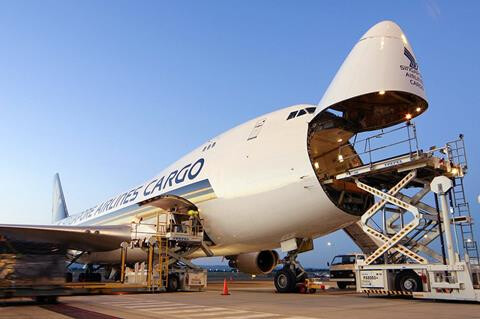
Singapore – Singapore Airlines (SIA) Group announced on May 15th that its cargo revenue for the fiscal year 2024/25 increased by 4.4% year-on-year to S$2.1 billion (approximately KRW 2.1 trillion), driven by rising demand for e-commerce and perishables, as well as increased air cargo demand due to disruptions in sea freight.
According to SIA's announcement, cargo and mail traffic volume increased by 16.3% compared to the previous year, and the cargo load factor (CLF) also rose by 1.6 percentage points to 56.1%. This indicates robust growth in SIA Group's cargo business segment. In particular, the continuous growth of the e-commerce market since the COVID-19 pandemic, along with disruptions in sea freight, is analyzed as a major factor contributing to the increased demand for air cargo.
However, despite the revenue increase, cargo yield fell by 7.8% due to intensified competition. This is interpreted as a result of price reduction pressure amid fierce competition in the air cargo market. SIA Group increased its cargo capacity by 10.1% during the fiscal year, but appears to have faced difficulties in securing profitability despite the increased supply.
As of March 31, 2025, Singapore Airlines Group's cargo network comprised 132 destinations in 37 countries and regions, and it operates its own fleet of 7 freighter aircraft. According to aviation information website Planespotters, Singapore Airlines owns 7 Boeing 747-400F freighters and leases 5 Boeing 777F freighters to operate for DHL Aviation. Additionally, it has 7 Airbus A350F freighters on order, with plans to further expand its cargo transportation capacity in the future.
In its earnings report, Singapore Airlines Group pointed out that the future performance of its cargo business could be vulnerable to global trade issues. The report stated, "The global airline industry faces a challenging operating environment amidst evolving tariff policies and trade tensions, economic and geopolitical uncertainties, and persistent supply chain constraints." It further warned, "These factors could impact consumer and business confidence, potentially affecting both passenger and cargo markets."
However, it also mentioned that opportunities for business expansion exist due to trade and supply chain developments in the Asian region. SIA Group's extensive global passenger and cargo network, with Singapore as its hub, is expected to capitalize on its geographical advantage of being located in growing economic centers in Southeast Asia, South Asia, and the broader Asia-Pacific region to capture new opportunities.
Meanwhile, Singapore Airlines Group's total revenue increased by 2.8% year-on-year to S$19.4 billion, but its operating profit decreased by 37.3% compared to the previous year due to increased fuel costs, staff costs, handling charges, and passenger-related expenses. This indicates that despite the revenue increase in the cargo business segment, overall cost increases negatively impacted the Group's profitability.
Industry experts analyze that for Singapore Airlines to achieve sustained growth in its cargo business segment, it needs to closely monitor changes in the global trade environment and make efforts to improve profitability in response to intensified competition. In particular, it will be crucial to develop strategies that can effectively meet the increasing demand for cargo transportation while maintaining profitability. Furthermore, along with expanding transportation capacity through the introduction of new freighters, exploring ways to increase yields, such as developing high-value cargo transportation markets, is also required.
[Copyright (c) Global Economic Times. All Rights Reserved.]



























